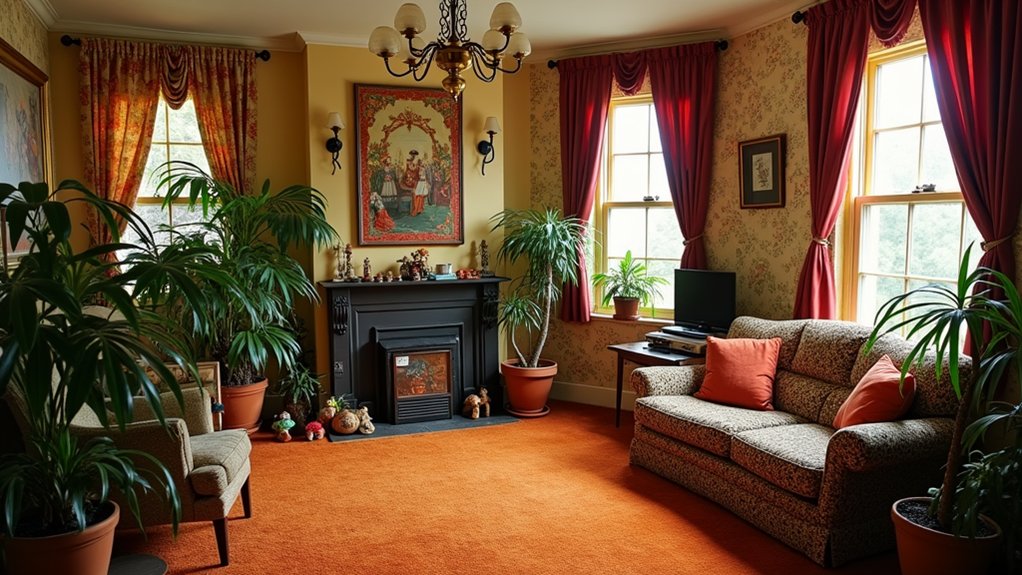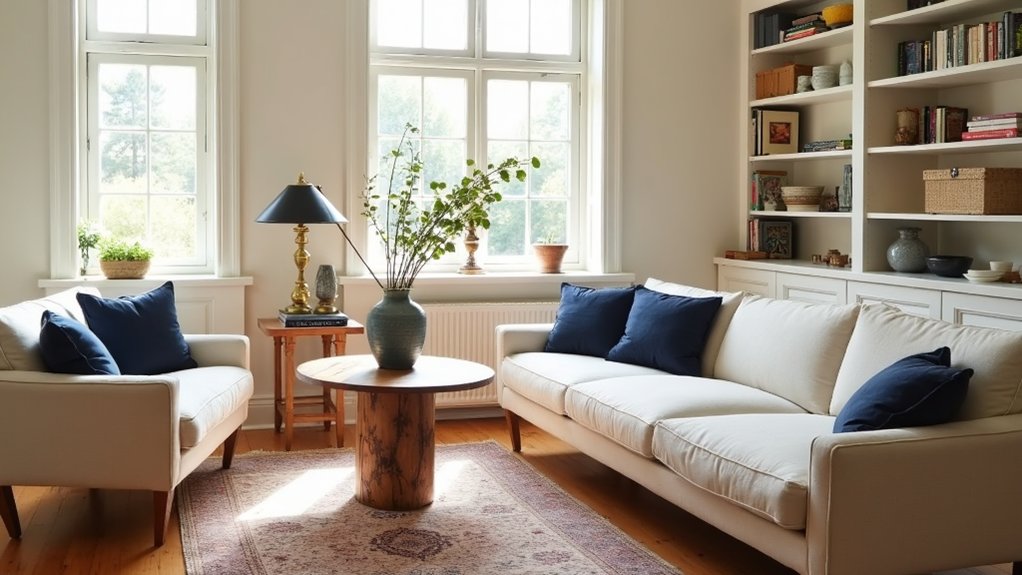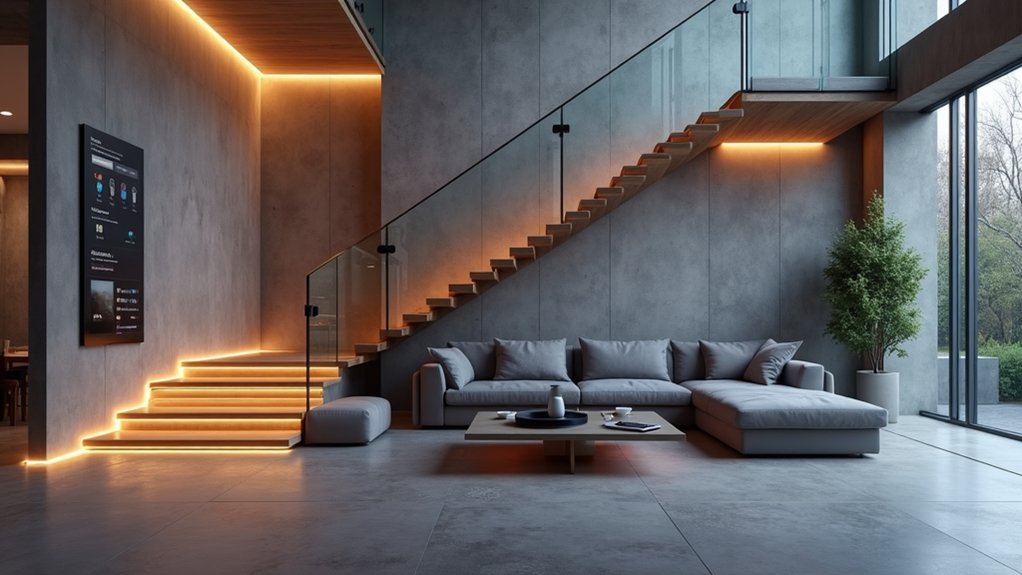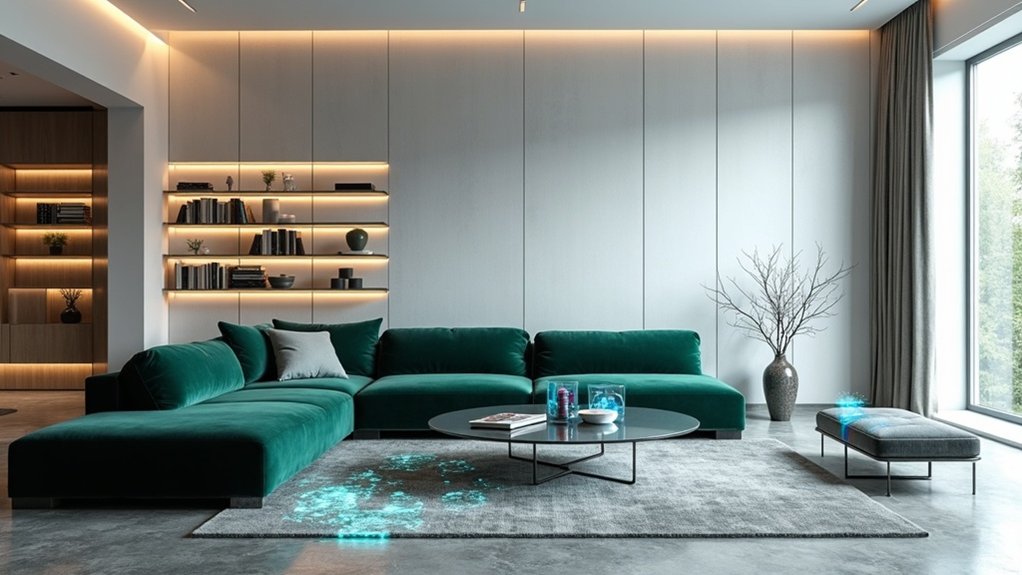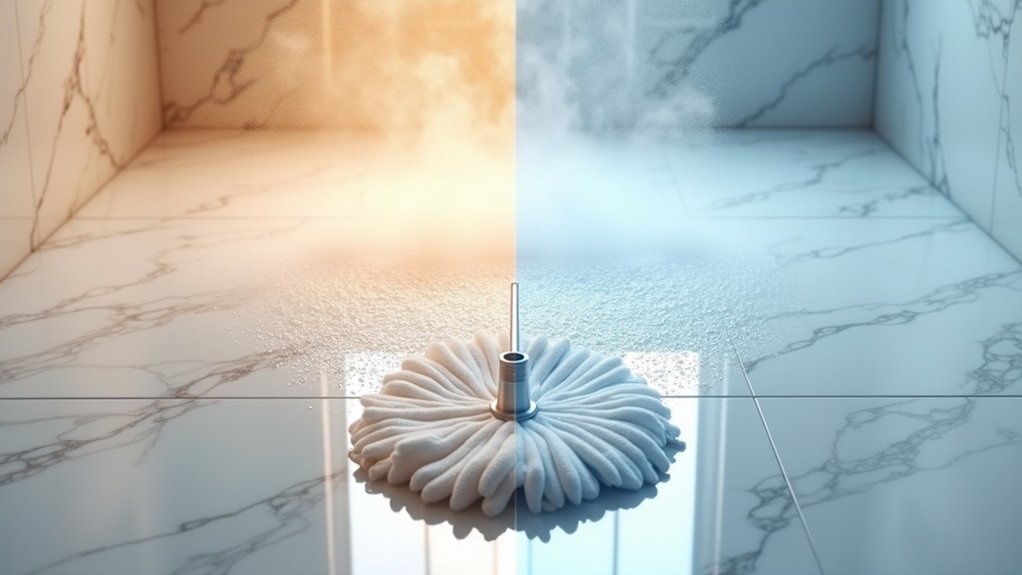When the prestigious furniture retailer Mitchell Gold + Bob Williams suddenly collapsed in 2023, leaving approximately 80,000 furniture pieces trapped in bankruptcy proceedings, the event sent shockwaves through an interior design industry already reeling from post-pandemic market volatility.
Mitchell Gold + Bob Williams’ collapse trapped 80,000 furniture pieces, exposing the interior design industry’s post-pandemic fragility.
The liquidation crisis exemplified how design failures can sabotage not just individual home sales but entire market segments, as homeowners found themselves reconsidering every aesthetic choice. The average American household invested $5,500 in interior design during 2023, yet many of these investments actively undermined resale value. Real estate professionals increasingly challenge conventional wisdom perpetuated by television shows and social media, which often promote design trends that appeal to current homeowners rather than future buyers. The proliferation of gray boxes with large windows in residential properties exemplifies how quick-flip development strategies prioritize speed over character, creating homogenous neighborhoods that fail to inspire buyers. Additionally, current interior design trends often overlook the importance of timeless aesthetics that resonate with potential buyers.
The luxury market particularly suffered, with Miami experiencing a staggering 40% decline in high-end home sales compared to the previous year. High-income households typically allocate $12,000 budgets for interior renovations, yet these substantial investments often fail to translate into proportional resale value when design choices clash with broader market preferences.
Technology has emerged as both savior and saboteur in this design dilemma. Wayfair’s AI tool “Decorify” generated 70,000 virtual room designs, demonstrating how digital visualization changes homeowner expectations while potentially encouraging impractical aesthetic choices.
These AI-enabled solutions increasingly influence renovation decisions, sometimes leading homeowners toward trendy but ultimately value-destroying modifications.
The stakes become even higher in disaster-prone regions. Hurricane Ian‘s $112 billion damage toll in Florida highlighted how poor design choices compound property value losses.
Surprisingly, flood-damaged properties sometimes show positive price effects in certain markets, though affected households typically relocate to higher-valued homes averaging $245,000 pre-storm. This creates complex tradeoffs where homeowners must balance aesthetic preferences against regional disaster risks.
Market recovery indicators suggest cautious optimism, with luxury home listings increasing 3% in the third quarter of 2023.
Houston’s remarkable 42% home price appreciation between 2017 and 2022, in spite of natural disasters, demonstrates resilience in well-designed properties.
Off-price retailers and liquidators thrived during furniture industry downturns, offering opportunities for savvy homeowners to acquire quality pieces at reduced prices.
Statistical methods like difference-in-differences now evaluate design impacts on home values, providing data-driven insights for homeowners maneuvering an increasingly complex market where poor design choices can result in catastrophic financial consequences.
